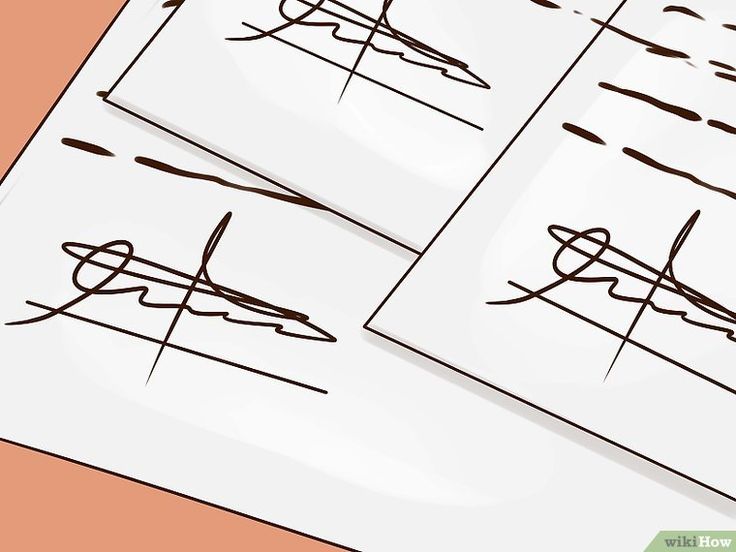Forensic signatures have become a major topic in legal and corporate contexts. But what exactly does it mean to spoof a signature? Signature forging is the act of creating or replicating another person’s signature without that person’s knowledge or authorization to deceive others into believing the forged signature is real.
Forging a signature is a serious offense that carries potential criminal prosecution as well as other legal repercussions like fines and jail time. It is a betrayal of trust that could have major negative effects on the victim’s finances and legal situation.
Acquiring knowledge about signature forging will enable you to protect yourself and your documents against fraud. Topics covered in this overview include types, prevention, and legal remedies.
What does a Forge signature entail?
Forgery is a legal term involving intent to defraud, defining a forged signature as a signature that is deemed fraudulent.
Different kinds of forged signatures:
- Free-hand simulation,
- Blind forgery, Sophisticated forgery, and
- Electronic forgery is an example of signature fraud.
Can someone legally forge a signature?
Generally speaking, forging a signature is against the law and constitutes fraud, with possible penalties including fines and jail time. While there are occasionally exceptions to the rule in areas like performance art or artistic expression, these are uncommon and do not apply to daily interactions or financial transactions. For situation-specific advice, see an attorney.
Tracing Method:
Tracing over the original signature is the easiest way to forge a signature. You’ll need an example of the original signature to accomplish this. You can find this in letters, documents, and even scans from the internet.
- a) Lay the original signature on top of a brightly lit tablet screen or beneath a sheet of tracing paper.
- b) If necessary, use tape to secure the paper to ensure it stays in place as you trace.
- b) Slowly and carefully trace over the signature with a small pen or pencil.
- d) You can use the original signature as a stencil to trace over it again onto the required document when you have finished tracing and taken it out from underneath your paper.
Keep in mind that while tracing may not produce a perfect reproduction of the original signature, it does yield a very accurate one.
The Grid Approach:
Using grids and disassembling the original signature into its parts is another method of forging a signature.
- a) Overdraw the original signature with tiny, equal-sized squares.
- b) Draw comparable-sized squares that represent the locations of each component of the corresponding letters on a different piece of paper (or on the document you intend to use).
- c) Take your time, concentrate on each square separately, and try to fit its content into the new grid as precisely as possible.
- d) Carefully erase or delete the square guidelines after completing the grid.
Perfect Practice:
Studying and continuously practicing signature forgery might be the most successful method.
- a) Examine the signature you want to copy and consider its distinct features, such as letter forms, loops, varying speeds, etc.
- b) Before attempting the entire signature, practice each letter independently.
- c) Arrange your copies and the original side by side, then look for any discrepancies. Take note of these differences and strive to address them in your subsequent efforts.
Continue doing this until the appearance of your version resembles that of the original signature.
How to avoid forging signatures
By putting best practices and security measures in place, fraudsters will find it more difficult to recreate signatures and perpetrate fraud. This will help prevent signature forgery.
Individuals and companies can take the following actions to stop signature forgeries:
- Document security: Put in place safe storage and access procedures for documents. Make use of secure digital document management systems or secured cabinets.
- Employee education: Train staff members on how to authenticate signatures and inform them of the dangers of signature forgery.
- Authentication protocols: Create and adhere to strong authentication protocols, particularly for significant contracts and financial activities.
- Employ digital signatures: Since digital signatures offer an increased level of security, you should think about utilizing them for electronic documents.
- Secure access limits who has access to accounts and documents that are sensitive. Only those with permission ought to be able to enter.
- Frequent inspections: To find any anomalies or suspect activities, audit financial records and contracts regularly.
- Anti-fraud software: To identify questionable activity and stop illegal access, think about utilizing anti-fraud software and solutions.
- Background checks: Verify the backgrounds of any staff members who handle private information or have access to bank accounts.
- Tamper-evident sealing: On crucial papers, use tamper-evident seals or security measures to show changes right away.
- Update security measures regularly: Keep up with best practices and security technology, adjusting your defenses as necessary to counter new threats.
What are the signs of a forged signature?
It can be difficult to tell if someone has faked a signature; it usually takes analysis, observation, and frequently professional judgment. To assist you in identifying whether a signature has been forged, follow these steps:
- Examine for writing style variances and similarities when comparing them to recognized authentic signatures.
- Check for consistency: Evaluate the signature’s general consistency.
- Pen pressure: Examine the differences in the amount of pressure used when signing.
- Flow and smoothness: Check the signature for a natural flow and smoothness.
- Verify that the letter alignment and spacing are consistent throughout.
- Verify the date by making sure it corresponds to the established schedule.
- Behavioral cues: Take note of the signer’s mannerisms and actions.
- Variation in the signature: Take note of notable stylistic adjustments.
- Digital analysis: Use encryption techniques to confirm digital signatures.
- Testimony of witnesses: Consult any witnesses in attendance at the time of signing.
- Expert advice: Speak with document examiners or forensic handwriting specialists.
- Document inspection: Check the document for errors or manipulation.
How to Forge a Signature: Legal and Law Enforcement Actions
When you suspect identity theft or forgery, take prompt, careful action because there could be severe financial and legal repercussions. For assistance in resolving problems in the US, consult law enforcement and legal experts.
- Report a crime to the police: You can report a suspected crime, including identity theft or forgery, to your local law enforcement organization. Give them every pertinent detail and piece of proof.
- Speak with the FBI: You can report an event to the Federal Bureau of Investigation (FBI) via their Internet Crime Complaint Center (IC3) website in situations involving federal offenses, such as identity theft that involves federal agencies or crosses state lines.
- Speak with the FTC: If you suspect identity theft, the Federal Trade Commission (FTC), which oversees consumer protection, can assist you. On their website, you can report identity theft and receive assistance.
- Engage legal counsel: Take into consideration speaking with a lawyer who handles identity theft or forgery cases. They can assist you in navigating the legal system, offer legal advice, and represent you in court.
- Get in touch with your bank or other financial institution: Report any financial transactions or checks that are part of the fraud very away. They could assist in looking into and possibly reversing illegal transactions.
- Civil litigation: To get damages for the forgery, you could file a civil lawsuit against the offender in particular circumstances. Seek legal counsel for direction.
- groups who support victims: Make contact with groups that offer assistance and services to people who have been victims of financial fraud and identity theft.
What happens if someone forges a signature?
Depending on the jurisdiction and the seriousness of the offense, there can be a wide range of penalties for signing fake documents. Typical sanctions could be:
- Fines for crimes
- Validation
- Community involvement
- Restitution, or giving victims recompense
- Internment (prison or jail term)
In summary of How to Forge a Signature:
Even though it can be an interesting exercise to forge a signature, it’s important to understand that utilizing duplicate signatures unlawfully could have serious repercussions. Here, the emphasis should be on mastering the methods for creative endeavors or lighthearted practical jokes, not on committing any fraudulent acts.



